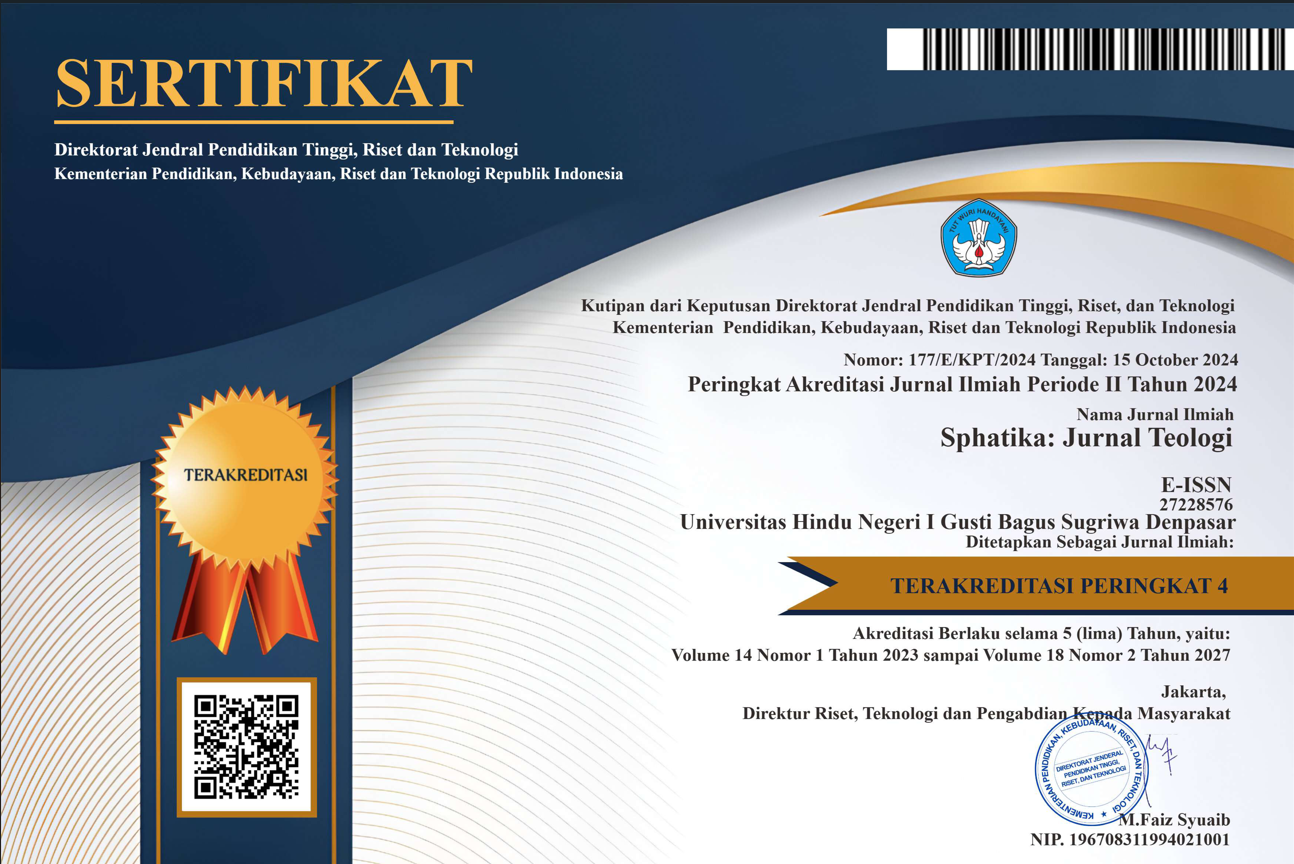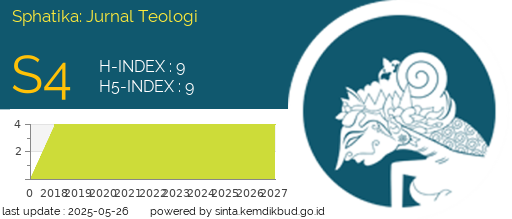Kajian Teologi pada Upacara Kematian di Bali:
Analisis Teks dan Konteks
DOI:
https://doi.org/10.25078/sphatika.v15i2.4240Keywords:
death ritual, theologyAbstract
This paper discusses the theological dimensions of the Ngaben death ritual in Bali, focusing on the relationship between Hindu concepts of divinity as outlined in Tattwa texts and the implementation of death rituals. In Hindu theology, the understanding of Brahman, both in its Nirguna (without attributes) and Saguna (with attributes) forms, plays a significant role in shaping the spiritual goals of Balinese Hindus related to eschatology and the attainment of moksha. This research uses a qualitative method with a theological approach. Through an analysis of texts such as Yama Purana Tattwa and Wrhaspati Tattwa, this article examines the meaning and purpose of Ngaben as a ritual for purifying the soul and releasing material elements. This research finds that, although there is a hope for the unification of the soul with God (moksha), the practice of Ngaben is more focused on Bhakti and Karma Marga, which emphasize the existential duality between atman (individual soul) and Brahman, in accordance with the Dvaita Vedanta approach. This indicates a difference between the theological concept of union with God in moksha and its implementation in death rituals in Bali about the importance of the results or conclusions brief.
References
Ambarnuari, M. (2016). Teo-Kosmologi dalam teks Bhuwan Mahbah. Institut Hindu Dharma Negeri Denpasar.
Buddha Gautama, W. (2009). Kamus Bahasa Bali-Indonesia. Paramitha.
Donder, I. K. (2009). Teologi: Memasuki Gerbang Ilmu Pengetahuan Ilmiah Tentang Tuhan Paradigma Sanatana Dharma (1st ed.). Paramita.
Donder, I. K. (2015). Keesaan Tuhan dan Peta Wilayah Kognitif Teologi Hindu: Kajian Pustaka tentang Pluralitas Konsep Teologi dalam Hindu. Harmoni : Jurnal Multikultural Dan Multireligius, 14(2), 22–35.
Harsananda, H. (2021a). Strukturasi Ajaran Tattwa Dalam Teks Tattwa Jnana. 4(2), 188–204. https://jayapanguspress.penerbit.org/index.php/kamaya/article/view/1282
Harsananda, H. (2021b). Strukturasi Ajaran Tattwa Dalam Teks Tattwa Jnana. 4(2). http://jayapanguspress.penerbit.org/index.php/kamaya
Mantik, A. S. (2007). Bhagavadgìtā. Paramita.
Maswinara, I. W. (1999). Sistem Filsafat Hindu ( Sarva Darsana Samgraha) (2nd ed.). Paramita.
Pals, D. L. (2012). Seven Theories Of Religion (2nd ed.). IRCiSoD.
Putra, I. G. A. G., & Sadia, I. W. (1998). Vrhaspati Tattwa (I. W. Maswinara, Ed.; 1st ed.). Paramita.
Rema, N. (n.d.). TRADISI PEMUJAAN LELUHUR PADA MASYARAKAT HINDU DI BALI Ancestor Worship Tradition at Hindu Society in Bali.
Sura, I. G., Kade Sindhu, I. da B., Dunia, I. W., Sukayasa, I. W., & Ketut Dalem, I. G. (1997). Tattwa Jnana (1st ed.). Dirjen Bimas Hindu dan Buddha.
Tim Penerjemah. (2002). Alih Aksara dan terjemahan Tutur Gong Besi Tutur Lebur Gangsa Tutur Angkus Prana. Dinas Kebudayaan Provinsi Bali.
Tim Pengkaji dan Penerjemah Pustaka Suci Veda (Vedānuvāda Samiti). (2021). Bhagavadgītā dan Terjemahannya. Direktorat Jenderal Bimbingan Masyarakat Hindu Kementerian Agama Republik Indonesia.
Wiana, I. K. (2004). Makna Upacara Yajna dalam Agama Hindu II. Paramita.
Wiana, K. (1998). Berbakti Pada Leluhur (Upacara Pitra Yajna dan Upacara Nuntun Dewa Hyang. Paramita Surabaya.
Wikarman, I. N. S. (2002). Ngaben ( Upacara dari Tingkat Sederhana Sampai Utama). Paramita Surabaya.















